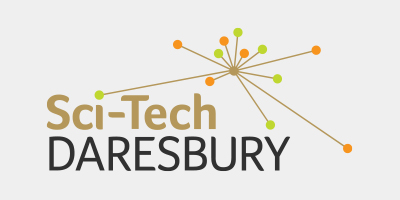November 30, 2023
Women in STEM: Inspiring the Next Generation of Female Leaders
In an increasingly tech-driven world, the contributions of women in STEM (Science, Technology, Engineering, and Mathematics) are of paramount significance.

In an increasingly tech-driven world, the contributions of women in STEM (Science, Technology, Engineering, and Mathematics) are of paramount significance. As we grapple with complex global challenges and strive for innovation, the participation of women in STEM fields is more crucial than ever.
Women are making remarkable strides in these disciplines, breaking down barriers and emerging as inspirational figures for the next generation. In this blog, we will explore the fascinating journey of women in STEM, their accomplishments, the challenges they've surmounted, and how they're serving as role models for aspiring female leaders in the field.
The Remarkable Rise of Women in STEM
Challenging Stereotypes and Prejudices
Historically, women have faced stereotypes and biases that have discouraged them from pursuing careers in STEM. Society, at large, held the belief that certain scientific and technical fields were better suited for men. This prejudice persisted for centuries, but it is gradually giving way to the realization that women are equally capable in STEM disciplines.
Prominent women in STEM have played a pivotal role in challenging these stereotypes. They've demonstrated that there are no gender-based restrictions on one's ability to excel in science, mathematics, engineering, or technology.
A Growing Presence in STEM
Over the years, the representation of women in STEM has steadily increased. Many countries are actively working to close the gender gap in STEM fields through initiatives that promote female participation in these disciplines.
As a testament to this progress, Dr. Frances Arnold, the Nobel Prize-winning chemist, said:
"The world needs all our talents, and that means we need to make science and engineering more welcoming to women."
Women in STEM: Changing the Landscape
Let's explore the stories of some remarkable women in STEM who are reshaping the landscape and inspiring future generations.
Dr. Jane Goodall: A Trailblazing Primatologist
Dr. Jane Goodall is a renowned primatologist, ethologist, and anthropologist who is best known for her groundbreaking work on chimpanzees. Her research at the Gombe Stream National Park in Tanzania revolutionized our understanding of primates and their behavior.
Dr. Goodall's enduring dedication to wildlife conservation and the protection of endangered species serves as a shining example of the impact one person can have in the world of STEM. Her work encourages young scientists to follow their passions and make a meaningful contribution to the world.
Dr. Jennifer Doudna: Gene Editing Pioneer
Dr. Jennifer Doudna is a molecular biologist who, along with Emmanuelle Charpentier, co-discovered the revolutionary CRISPR-Cas9 gene-editing technology. This groundbreaking advancement has the potential to revolutionize the treatment of genetic diseases and unlock new possibilities in the field of medicine.
Dr. Doudna's story is one of innovation and collaboration, and it highlights the immense impact women can have in reshaping the future of science and technology.
In her own words, Dr. Doudna emphasizes the collaborative nature of STEM:
"Science is a social activity; it's a team sport."
The Power of STEM Education
While women have made significant strides in STEM, it is essential to recognize the role of education in nurturing the interest and potential of young girls in these fields.
Dr. Mae Jemison: Championing STEM Education
Dr. Mae Jemison, the first African-American woman in space, is a vocal advocate for STEM education. She emphasizes the importance of nurturing children's curiosity and inspiring them to explore STEM subjects from an early age. Dr. Jemison founded the Jemison Group, an organization dedicated to advancing technology and education, particularly for girls and minority students.
Dr. Jemison's dedication to education underscores the idea that cultivating a love for STEM in young minds can lead to extraordinary achievements and diversity in the field.
Encouraging Future Female Leaders
As women continue to break barriers and make their mark in STEM, it's crucial to empower the next generation of female leaders in these fields. Here are some key steps to inspire and support young girls pursuing STEM careers:
- Promote STEM Education: Encourage young girls to explore STEM subjects through interactive, hands-on activities, mentorship programmes, and STEM camps. These experiences can foster a lifelong passion for science and technology.
- Highlight Female Role Models: Make the accomplishments of women in STEM more visible by showcasing their achievements in classrooms, libraries, and community centres. Personal stories and experiences can be powerful motivators.
- Advocate for Gender Equality: Raise awareness about gender disparities in STEM and advocate for policies and initiatives that promote gender equality, such as equal pay and support for work-life balance.
- Support Mentorship and Networking: Create opportunities for young women to connect with experienced female professionals in STEM. Mentorship can provide guidance, inspiration, and a sense of belonging in a male-dominated field.
Lisa Layzell, Co-founder & CEO at Robotiz3d Ltd, an exciting technology startup based here at Sci-Tech Daresbury who are building the world’s first autonomous road maintenance vehicle to help tackle the spiralling pothole problems said:
“The future of innovation knows no gender boundaries. Women are already making an extraordinary difference in advancing the frontiers of science, technology, engineering, and mathematics. Empower the girls of today, and you'll ignite the women leaders of tomorrow.”
The Challenges Women in STEM Face
While women have made significant progress in STEM, challenges persist that hinder their full participation and advancement in these fields.
Stereotypes and Bias
Gender stereotypes and biases continue to affect women in STEM. From the perception that women are less capable in math and science to the deeply ingrained belief that STEM is a male-dominated field, these stereotypes can deter young girls from pursuing careers in these disciplines.
As Margaret Mead, the influential cultural anthropologist, once said, "Children must be taught how to think, not what to think." Encouraging critical thinking and dismantling stereotypes should be a fundamental aspect of STEM education.
Lack of Representation
The lack of visible female role models in STEM can also discourage girls from pursuing these fields. It's essential for young people to see individuals who look like them achieving success in STEM disciplines, as it can instil a sense of belonging and the belief that they too can excel in these fields.
Dr. Sally Ride: Breaking the Space Barrier
Dr. Sally Ride, the first American woman to journey into space, is a prime example of the importance of representation. Her historic mission in 1983 shattered gender norms and inspired countless girls to dream of becoming astronauts or pursuing STEM careers.
In her memory, Dr. Ride's advice still resonates:
"Young girls need to see role models in whatever careers they may choose, just so they can picture themselves doing those jobs someday."
Work-Life Balance
Balancing a demanding career in STEM with family life can be a significant challenge for women. Stereotypes and societal expectations often place the burden of childcare and household responsibilities on women, making it more challenging for them to excel in STEM careers.
Organizations and institutions must support women in STEM by providing flexible work arrangements, affordable childcare, and family-friendly policies. Recognizing and addressing these challenges is essential to closing the gender gap in STEM.
Navigating the Path Forward
To ensure that women continue to thrive in STEM and inspire future generations, we must collectively address the challenges they face and create an environment that fosters diversity and inclusion. This journey requires the involvement of educational institutions, government policies, the private sector, and the broader community.
The Role of Educational Institutions
Educational institutions play a fundamental role in encouraging women to pursue STEM careers. They should:
- Provide mentorship and support for female students in STEM programmes.
- Develop initiatives that highlight the achievements of women in STEM, promoting them as role models.
- Offer scholarships and financial assistance to reduce barriers to entry.
Government Policies and Initiatives
Government policies can be instrumental in promoting gender diversity in STEM. Policymakers should consider:
- Implementing equal pay policies to ensure that women in STEM are paid fairly for their contributions.
- Providing funding for STEM programmes that specifically target girls and underrepresented minorities.
- Supporting initiatives that promote work-life balance, such as affordable childcare options.
The Private Sector's Responsibility
Private sector organizations have a crucial role to play in promoting diversity and inclusion in STEM. They can contribute by:
- Implementing diversity and inclusion programmes that create a welcoming environment for women in STEM.
- Encouraging mentorship and networking opportunities for female employees.
- Offering flexible work arrangements that support work-life balance.
Community Engagement
The broader community can also contribute to the advancement of women in STEM. Communities can:
- Organize STEM-related events, workshops, and outreach programmes to engage young girls.
- Promote STEM role models within the community, showcasing local women in STEM.
- Advocate for the inclusion of STEM education and resources in schools and libraries.
The journey of women in STEM is a testament to resilience, determination, and the unwavering pursuit of passion. Women have proven time and again that they not only belong in STEM but also excel in these fields. By highlighting the accomplishments of women in STEM, promoting education, and addressing the challenges they face, we can inspire the next generation of female leaders in science, technology, engineering, and mathematics.
The words of Ada Lovelace, the world's first computer programmer, ring true:
"That brain of mine is something more than merely mortal, as time will show." The future of STEM is indeed in the capable hands of women who are breaking barriers, leading the way, and inspiring generations to come.



